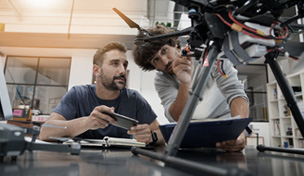Keywords: Medical Devices, Tissues, Biotechnology
Market Overview
It is reported that there are 1.7 million new breast cancer diagnoses each year, and reports indicate that when lumpectomy is an option, 64.5% of patients will undergo the surgery. As such, the global breast lesion localization market is projected to reach $877.9M by 2020 with a CAGR of 14.5% 2015-2020. In the U.S. alone, 329,520 new cases of breast cancer will be diagnosed in 2019, placing the total domestic market value at $263M. However, the current gold standard in breast tumor identification is wire localization, an extremely uncomfortable procedure where a wire is inserted from the surface of the breast to the approximate location of the tumor, for the surgeon to follow. This wire protrudes from the breast and is extremely uncomfortable, and additionally can mislocalize the tumor, resulting in incomplete removal.Clemson researchers have developed a breast tissue biopsy marker consisting of a polymeric carrier with embedded metallic nanoparticles, designed with the purpose of enabling clinicians to localize a cancerous region within the breast tissue non-invasively.
Delphine Dean
2020-012
Applications:
Tumor Localization, Biopsy, Cancer
Technical Summary:
This invention is partially comprised of the polymeric carrier, with the purpose of being highly bio-compatible and biodegradable within the patient over the course of a predetermined timeline. It is additionally comprised of ferrous nanoparticles, with the purpose of enabling the location of the marker to be determined magnetically by a probe. Currently, competing technologies such as Magseed and Mamaloc utilize all metal markers, which creates voids in MRI images and incompatibility issues render them not recommended for patients with nickel allergies. Additionally, the all-metal body of these seeds can lead to the detector device having to be recalibrated during surgery, due to thermal drift throwing off the accuracy of its measurements. Due to the biocompatibility of the marker’s PLGA/PLA composition, this device has utility as a primary marker, due to the ability to be placed long in advance of surgery and indefinitely maintained in the tissue until a predetermined date of biodegradation. Because this technology substantially reduces reliance on high-cost imaging facilities necessary for both radioseeds and wires, this technology and technologies of its type are substantially cost saving.
Advantages:
• Increased precision of localization leads to improved cancer margins
• Seed placement concurrent with initial biopsy and reduced size result in increased patient comfort
• Biocompatible materials allows for long term monitoring ability, increasing monitoring efficiency and application to other clips.
Technology Overview
State of Development
Pre alpha test prototype
Patent Type
Provisional
Category
Serial Number
62/924,928
CURF Reference No.
2020-012
Inventors
Delphine Dean
For More Info, Contact:
Interested in this technology?
Contact curf@clemson.edu
Please put technology ID in subject line of email.
Contact
Latest News from CURF
Stay up-to-date with the latest trends in the innovation and research industry. Sign up for our newsletter to see how CURF is making a difference and impacting the economy where we live.









